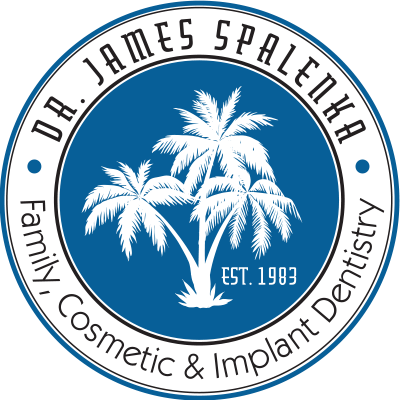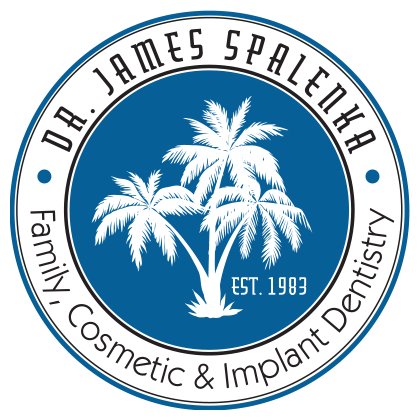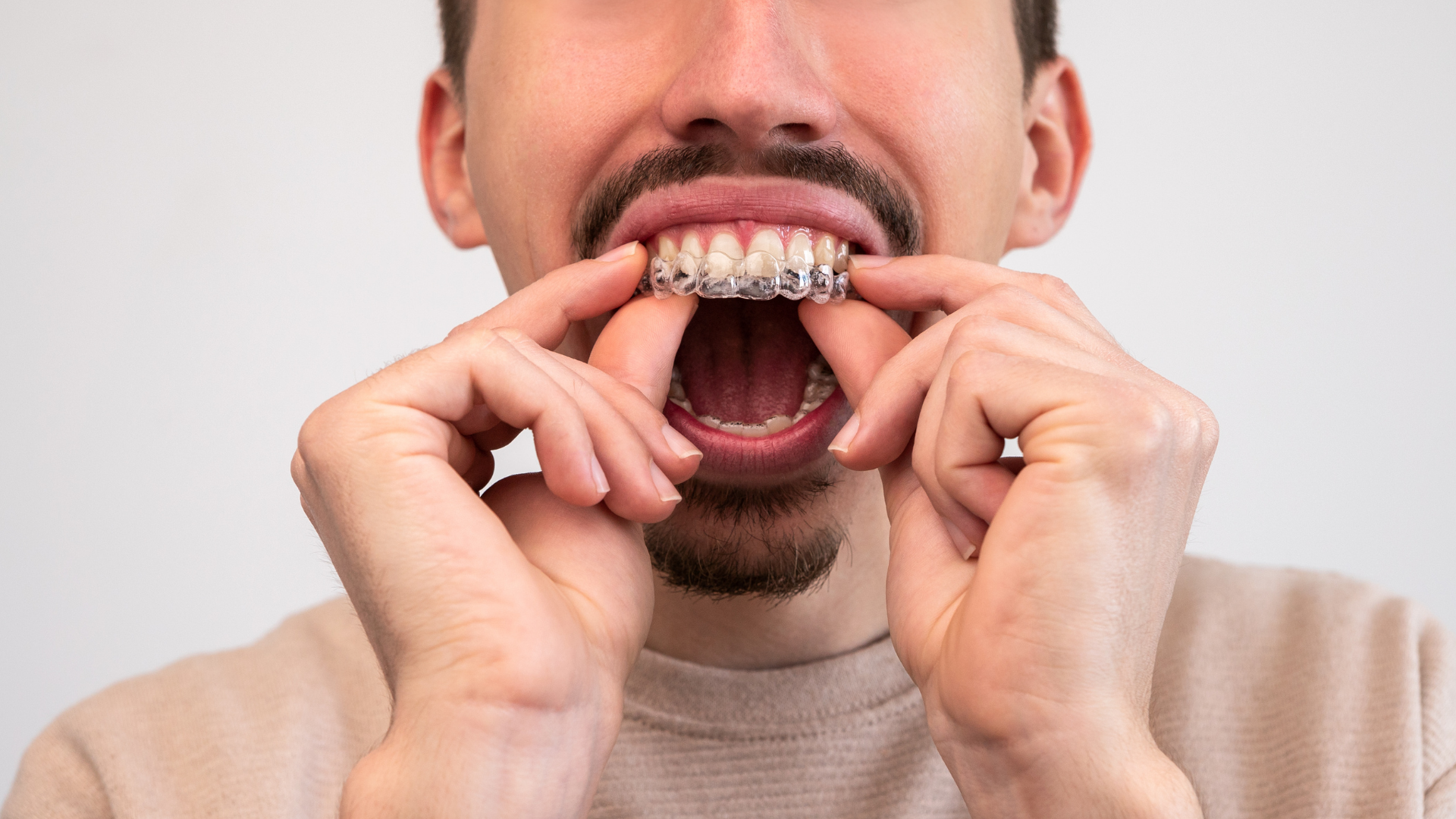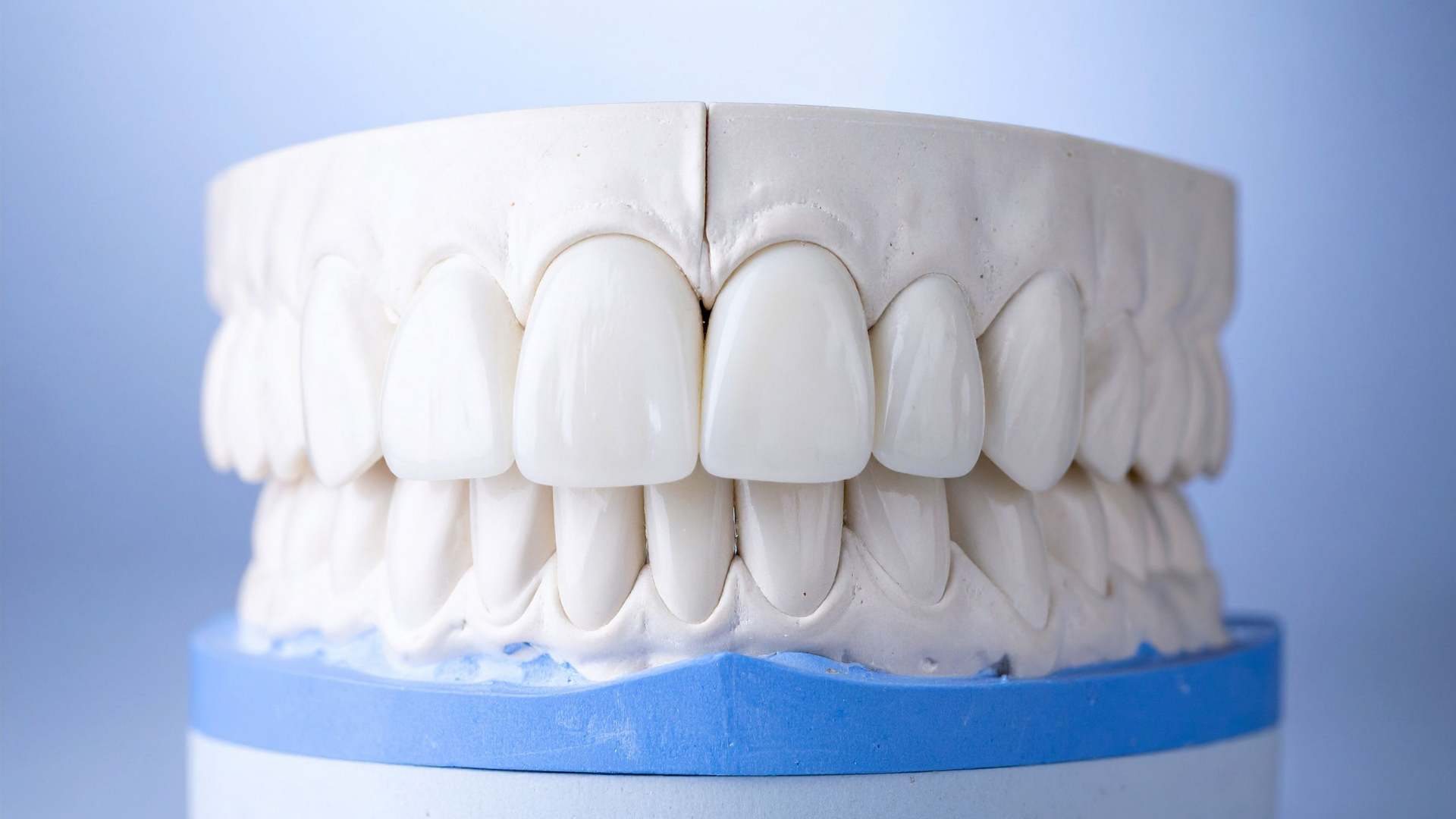Innovations in 2023, Moving Forward in 2024
The world of dentistry witnessed a remarkable evolution in 2023, marked by significant technological innovations and advancements. These changes have not only transformed dental practices but have also significantly enhanced patient experiences and outcomes. In this dynamic environment, the field of cosmetic dentistry has been particularly influenced, with new technologies and techniques reshaping everything from routine procedures to complex cosmetic treatments.
At the forefront of embracing and implementing these innovations in San Diego, California, is the practice of Dr. James D. Spalenka, Family & Cosmetic Dentist . Dr. Spalenka's practice is known for its commitment to staying at the cutting edge of dental technology and methods. This commitment is not just about leveraging new tools and procedures; it's about enhancing patient care and ensuring the best possible outcomes. By integrating these state-of-the-art advancements, Dr. Spalenka’s practice ensures that patients receive the most modern, efficient, and effective dental care available.
This blog will delve into the top innovations in dental technology and practice that emerged in 2023 and look ahead to what we can expect in 2024. It will highlight how these advancements have been and will continue to be integrated into the patient care approach at Dr. Spalenka’s practice.
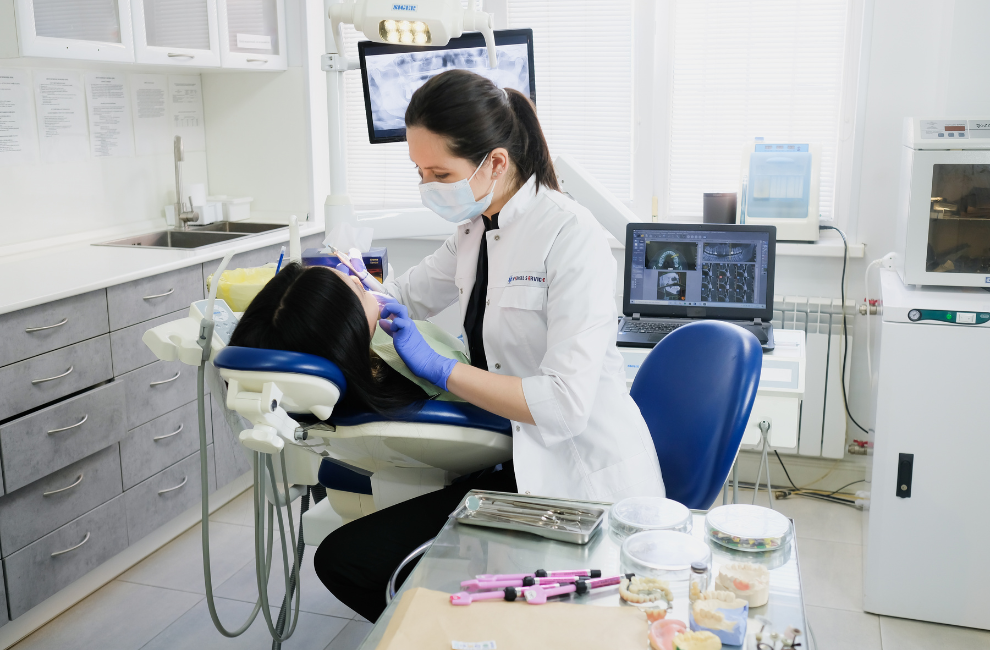
Breakthroughs in Cosmetic Dentistry in 2023
The year 2023 was a landmark year for
cosmetic dentistry
, with several technological advancements significantly improving patient care and outcomes. These innovations have not only streamlined dental procedures but have also greatly enhanced the quality and durability of cosmetic dental treatments.
Artificial Intelligence and Machine Learning
One of the most groundbreaking developments in 2023 was the integration of Artificial Intelligence (AI) and Machine Learning in cosmetic dentistry. AI technology has been utilized in various aspects of dental care, including diagnostics, treatment planning, and even in performing certain dental procedures with high precision. These AI-driven technologies have enabled dentists to offer more accurate and personalized care to patients, improving treatment outcomes significantly.
Advanced Imaging Techniques
The advancement in imaging techniques, including 3D imaging and digital scanning, has been another milestone. These technologies have allowed for more precise diagnosis and treatment planning, enabling dentists to visualize the end results of cosmetic procedures even before they start. This has greatly increased patient satisfaction, as they can have a clearer understanding of what to expect from their treatments.
Improvements in Dental Materials
There have been significant improvements in the materials used in cosmetic dentistry, such as in the development of more durable and aesthetically pleasing dental composites and ceramics. These materials mimic the natural appearance of teeth more closely than ever before, providing patients with more natural-looking restorations.
Minimally Invasive Techniques
The trend towards minimally invasive cosmetic dental procedures continued to grow in 2023. Techniques such as laser dentistry have allowed for procedures that are less painful, require less recovery time, and preserve more of the natural tooth structure. This approach has increased the popularity of cosmetic dental procedures, as they become more accessible and less intimidating to patients.
Digital Dentistry
Digital dentistry, encompassing everything from digital impressions to computer-aided design and manufacturing (CAD/CAM), has streamlined the workflow in cosmetic dental procedures. These digital technologies have reduced the turnaround time for dental restorations like crowns and veneers, making the process faster and more efficient.
In conclusion, the advancements in cosmetic dentistry in 2023 have transformed the way dental care is delivered. These technological breakthroughs have not only improved the efficiency and accuracy of cosmetic dental procedures but have also significantly enhanced patient comfort and satisfaction. As these technologies continue to evolve, they promise to further
revolutionize cosmetic dentistry
, making it more effective and accessible to patients.
The Role of AI and Digital Dentistry
The integration of Artificial Intelligence (AI) and digital dentistry in 2023 marked a significant turning point in the field of cosmetic dentistry, revolutionizing both diagnostics and treatment planning.
AI in Diagnostics and Treatment Planning
AI's role in diagnostics has been transformative. By employing advanced algorithms to analyze dental images, AI can detect nuances and patterns that may escape the human eye. This capability has been crucial in early detection and diagnosis of dental issues, leading to timely and more effective treatments. For instance, AI-driven systems can accurately identify signs of decay, gum disease, and other oral health issues much earlier than traditional methods.
In treatment planning, AI has brought a level of precision and personalization previously unattainable. With AI, dentists can simulate various treatment outcomes and create tailored treatment plans that meet the unique needs of each patient. This predictive modeling helps in setting realistic expectations and enhances patient satisfaction. AI algorithms can also assist in orthodontic treatments by predicting tooth movements more accurately, optimizing treatment times and outcomes.
Digital Impressions and CAD/CAM
The shift from traditional physical impressions to digital impressions has been a game-changer. Digital impressions are more comfortable for the patient, as they eliminate the need for messy and sometimes uncomfortable impression materials. They also provide more accurate and detailed images, improving the fit and quality of restorations like crowns, veneers, and aligners.
Computer-Aided Design and Computer-Aided Manufacturing (CAD/CAM) technology, which often works in tandem with digital impressions, allows for the in-office creation of precise dental restorations. This technology has significantly reduced the time required to produce custom dental prosthetics, improving efficiency and patient convenience.
Teledentistry
Teledentistry has emerged as an important aspect of digital dentistry, especially in the context of the COVID-19 pandemic. It has enabled remote consultations, diagnosis, and treatment planning, extending dental care to those who might not be able to visit a dental office in person. Teledentistry has been particularly beneficial for follow-up appointments and minor consultations, saving time and resources for both patients and practitioners.
In conclusion, the role of AI and digital dentistry in 2023 has had a profound impact on the field of cosmetic dentistry. These technological advancements have not only streamlined dental procedures but have also greatly improved the accuracy, efficiency, and personalization of patient care. As these technologies continue to evolve, they will further enhance the capabilities of dental professionals and improve patient experiences.
Advancements in Dental Materials and Techniques
The advancements in dental materials and techniques in 2023 have significantly enhanced the field of cosmetic dentistry. These developments not only improved the aesthetic appeal of dental treatments but also their durability and patient comfort.
Advancements in Dental Materials
Advanced Composites and Ceramics
The year 2023 saw remarkable improvements in the materials used for dental restorations, particularly in composites and ceramics. Advanced composites now offer better color matching to natural teeth, greater durability, and resistance to staining. These materials have made fillings, veneers, and other cosmetic enhancements more visually appealing and long-lasting.
Ceramics, too, have undergone significant advancements. The latest ceramic materials provide a more natural look, closely mimicking the translucency and texture of natural teeth. They are not only aesthetically superior but also boast enhanced strength and wear resistance, making them ideal for veneers, crowns, and bridges.
Innovative Techniques in Cosmetic Dentistry
Minimally Invasive Procedures
Minimally invasive dentistry has been a key focus in recent years, with 2023 being no exception. Techniques such as no-prep or minimal-prep veneers, which require little to no removal of the tooth structure, have become more popular. These procedures are less traumatic for patients, preserve more of the natural tooth, and require less recovery time.
Inlays and onlays, which are more conservative than traditional crowns, have also gained popularity. They provide a durable restoration for damaged teeth without the need for extensive tooth reduction.
Laser Dentistry
Laser dentistry has emerged as an innovative technique in various cosmetic dental procedures. Lasers are used for gum contouring, teeth whitening, and removing decay. This technology offers precision, reduced bleeding, and quicker healing times, enhancing patient comfort and outcomes.
Digital Smile Design
Digital Smile Design (DSD) has become an integral part of cosmetic dentistry. This approach involves using digital technology to create a virtual simulation of the expected results of cosmetic dental procedures. DSD allows patients to visualize their new smile before the treatment begins, ensuring their expectations are aligned with the potential outcomes.
In summary, the advancements in dental materials and techniques in 2023 have greatly contributed to the efficacy and appeal of cosmetic dentistry. These innovations not only enhance the aesthetic quality of dental treatments but also focus on patient comfort and oral health preservation. As we continue to see advancements in these areas, the field of cosmetic dentistry is set to provide even more effective and appealing options for patients seeking dental enhancements.
Patient-Centered Care and Customization
The shift towards patient-centered care and customization in cosmetic dentistry is a defining trend of 2023, reflecting a deeper understanding of individual patient needs and preferences. This personalized approach is significantly enhancing patient satisfaction and treatment outcomes.
Personalized Dental Care
The essence of patient-centered care lies in treating each patient as unique, with specific aesthetic goals, dental health needs, and personal preferences. This approach contrasts with the one-size-fits-all methodology, as it involves tailoring treatments to meet the individual requirements of each patient. Personalization in cosmetic dentistry encompasses everything from the initial consultation, where patients' concerns and desires are carefully listened to, to the customization of treatment plans.
Customization in Dental Procedures
Customization in dental procedures is largely facilitated by technological advancements like digital smile design and 3D imaging. These tools allow dentists and patients to work together to design the desired outcome of cosmetic treatments, whether it's the shape, color, or alignment of teeth. For instance, with digital smile design, patients can see a simulation of the final result before any procedure is undertaken, ensuring that their expectations align with the potential outcome.
This level of customization not only increases patient involvement in their own dental care but also leads to higher satisfaction. When patients see that their input directly influences their treatment, it creates a sense of ownership and satisfaction with the results. Moreover, personalized care often translates to more conservative and precise treatments, preserving as much natural tooth structure as possible and ensuring better oral health in the long run.
Enhancing Patient Satisfaction
The trend towards customization and personalized care is a response to patients' growing desire for dental treatments that not only function well but also look natural and reflect their individuality. Dentists who embrace this trend are finding that their patients are more satisfied with their treatments, leading to better overall experiences and outcomes.
In conclusion, the move towards patient-centered care and customization in cosmetic dentistry reflects a significant shift in how dental care is delivered. This approach not only improves the aesthetic and functional aspects of treatments but also enhances the overall patient experience, leading to higher levels of satisfaction and better long-term dental health outcomes.
Looking Ahead: What’s Next in 2024
As we look towards 2024, the field of cosmetic dentistry is poised to embrace further innovations and trends that will continue to revolutionize patient care.
One key area of advancement is likely to be in the realm of material science. We can anticipate the development of even more advanced dental materials that mimic natural tooth structure with greater precision and durability. These materials will not only enhance the aesthetic appeal of restorations but also improve their functional longevity.
Another significant trend will be the continued evolution of digital dentistry. Technologies like AI and machine learning are expected to become more sophisticated, offering enhanced capabilities in diagnosis and treatment planning. We might see an increase in the use of augmented reality (AR) for patient education and engagement, providing interactive and immersive ways for patients to visualize potential outcomes of their treatments.
Minimally invasive techniques will continue to gain traction, focusing on preserving natural tooth structures and reducing recovery times. Procedures like laser dentistry and air abrasion are expected to become more prevalent, offering patients more comfortable and less invasive treatment options.
The integration of holistic dental practices might also increase, focusing on the overall well-being of patients and not just their oral health. This approach could include the use of biocompatible materials and a greater emphasis on the impact of oral health on the body as a whole.
Lastly, teledentistry will likely continue to expand, making dental care more accessible to a broader population. This will be particularly beneficial for routine consultations and follow-up appointments, enhancing the convenience of dental care.
These advancements in 2024 are set to further transform the landscape of cosmetic dentistry, making treatments more efficient, patient-friendly, and tailored to individual needs. As these innovations unfold, they will undoubtedly continue to enhance the quality and accessibility of dental care.
FAQs
Dr. James D. Spalenka: Leading the Way in Cosmetic Dentistry
Dr. James D. Spalenka stands as a vanguard in the field of cosmetic dentistry, consistently demonstrating a commitment to incorporating cutting-edge technology and techniques in his practice. His dedication to adopting the latest advancements reflects a deep commitment to providing the highest quality of care to his patients. Dr. Spalenka's approach is patient-centered, focusing on personalized treatments that meet the unique needs and aesthetic goals of each individual. His passion for continuous learning and staying abreast of the latest developments in cosmetic dentistry ensures that his patients benefit from the most modern and effective treatments available. This dedication not only enhances the patient experience but also ensures the best possible outcomes, solidifying Dr. Spalenka's reputation as a leading figure in cosmetic dentistry.
The office of Dr. James Spalenka, DDS.
A Gentle, Comfortable Dental Experience, Offering Skill & Modern Technology
HIGH-TECH EQUIPMENT | CARING STAFF | MODERN OFFICE
